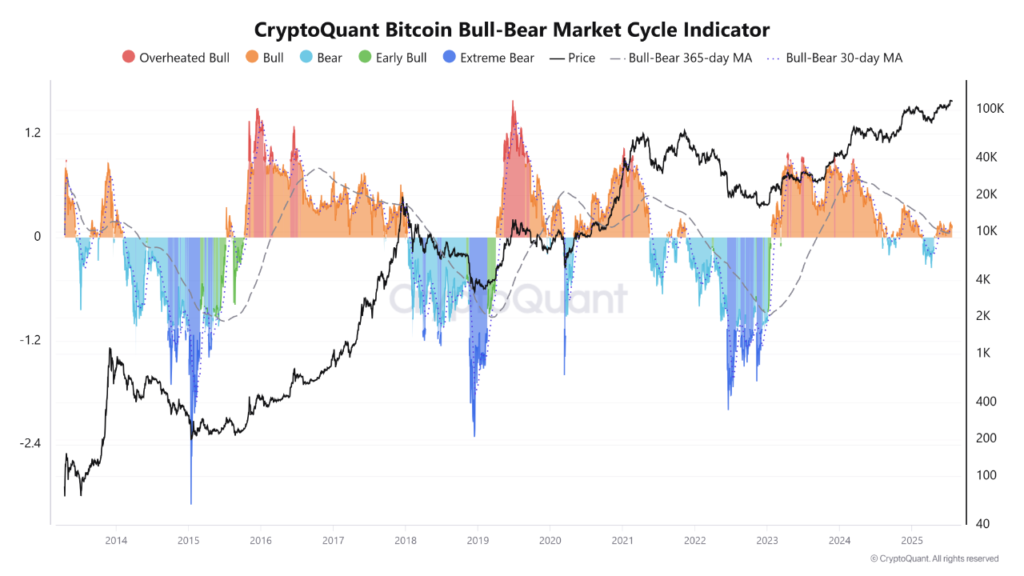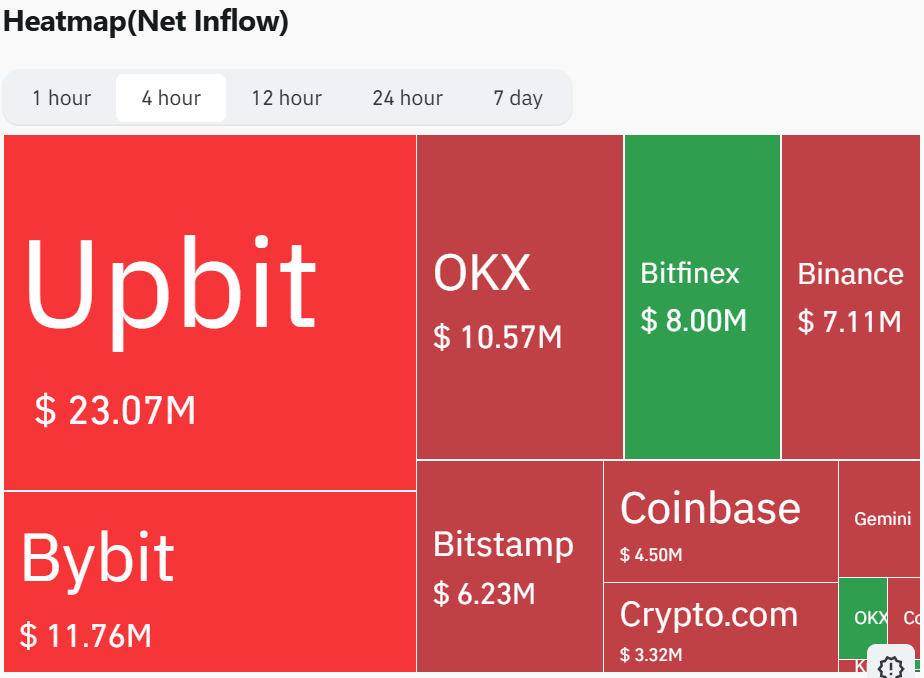The Bitcoin market is still trending upward, but its momentum is starting to dwindle after hitting the all-time high of $123,091. At press time, it was trading at $118,118, down 4.05% from the ATH.
According to data shared by Arab Chain analyst on CryptoQuant, bull and bear cycle indicators indicate that the price is currently still in an uptrend, but is already quite close to an area commonly referred to as overheating. Like a car engine being driven continuously uphill, there are moments when the temperature rises, which is not a good sign.

Entering the overheating zone is usually not the beginning of a rally, but rather marks the end of a surge. This doesn’t mean the market will immediately crash, but the potential for a correction or at least a pause in the rise is very real. Cautious investors are holding off, anticipating a better time to reenter the market.
Speculators also appear to be playing it safe. They are slowly taking profits and closing their positions. If you are too reckless in entering this zone, you often only get a small jump, then the price immediately crashes. And that’s clearly not a pleasant position to be in, especially if you’ve just entered on a large scale.
On the other hand, medium- to long-term moving average indicators (30 to 365 days) still show a trend that supports price growth.
As long as there are no extreme shocks from global markets or regulators, Bitcoin could continue its upward trend and truly enter an overheated bull run. However, such a run is often accompanied by selling pressure.
Bitcoin market signals shift with major outflows
Furthermore, according to CoinGlass data, investor behavior on spot exchanges in the past four hours has begun to show signs of caution.

Upbit, one of the major crypto exchanges in South Korea, recorded the largest withdrawal of funds, reaching over $23 million. This was followed by other exchanges like Bybit and OKX, with outflows of $11 million and $10 million, respectively. Binance and Coinbase saw fund outflows of approximately $7.11 million and $4.5 million, respectively.
Furthermore, almost all major platforms recorded fund outflows, not inflows. It’s not about fear, but rather a calm decision to begin stepping out. Often, by the time large investors make their move, the damage is done before retail traders catch on.

